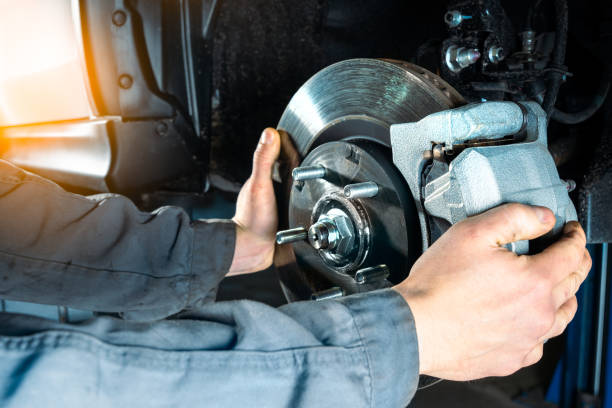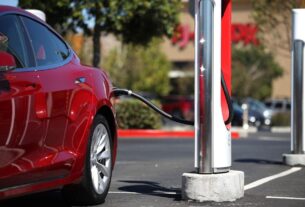A braking system in a vehicle is a crucial safety mechanism responsible for slowing down or stopping the vehicle when necessary. It typically consists of various components, including brake pads, rotors, brake lines, and a master cylinder.
Braking systems
The braking system is the main element that ensures the vehicle is safe to drive.
Brake systems are the basis of automotive safety; they provide the car with its main parts responsible for decelerating and ultimately stopping it.
Among the various traffic situations, ranging from crowded urban streets to high-speed highway driving, braking seems to be the key to retaining control and stopping just short of any mishap or disaster.
Therefore, braking systems are critical in preventing such crashes and passengers and keeping road traffic as safe as possible. The point of value of stable braking systems extends not only to passenger cars, buses, and trucks, but they can also be vital in different types of transportation, which affirms their universal importance in modern transportation systems.
History of braking technology
The history of braking technology can be traced over centuries, as it has gone through many stages set by significant innovations that enhanced car safety and pace. An immensely great revolution has deeply immersed the braking technology field, from the rudimentary manual braking mechanisms applied in early horse-drawn carriages to the highly sophisticated systems commonly found in recent vehicles.
A significant historical moment in this system
A significant historical moment was the evolution from foot (hand) brakes to hydraulic systems, which brought not only more safety but also easier control of the vehicle. During that period, the latter half of the 20th century, some remarkable advancements, like the adoption of Anti-locking braking systems (ABS), have led to a radical change in the concept of automotive safety, thus facilitating drivers to maintain control during emergency braking operations. Its growth continued with the creation of electronic brake-force distribution (EBD) and brake assist systems that eventually led to better braking function and reaction.
Brief Introduction to the Focus of the Article
This paper focuses on the latest inventions in braking systems that are highly relevant for automotive safety and performance, which will be discussed in the context of the historical cycle of technological development as presented above. Concepts include new and innovative technologies for appearance, with manufacturers and researchers constantly exploring the limits of what is technologically possible in braking technologies.
Evolution of Braking Systems
These days, brakes are complicated systems that use hydraulic fluid to initiate braking. Despite that, it proved to be very difficult, and often, it did affect very little. Indeed, the fate of braking systems was drastically influenced by hydraulic brakes.
These systems consisted of fluid pressure, which made the braking fairly flawless and well-controlled. Planting from manual to hydraulic devices was the major technique to improve their functions.
Invention of the Anti-lock Braking System (ABS) and its Impact on Safety
They allow your wheels to react to the lock-up, resulting in the retention of your steering even during an emergency break. ABS enhances the motorist’s safety in a possible skid and prevents accidents; this is very common on slippery roads.
Development of Systems
Development of Systems such as EBD, a low-cost system that increases the brake force at the wheel with less braking distance when the vehicle decelerates, and the Brake Assist System is the result.
Yet again, ABS appeared, giving way to Electronic Brake-force Distribution (EBD). A smart system here would be akin to having a peek into the future and knowing where to apply the most brunt of brake force. Therefore, this tends to minimize the chances of the car getting out of balance
Regenerative braking systems can successfully be implemented in hybrid and EV cars.
Not only do hybrids and electric vehicles do something wickedly cool when you brake, but people do, too! Not only are they stoppers of cars, but they also gain some energy that would otherwise be lost and channel it to charge the vehicle’s battery.
The Development of Modern Braking Technology significantly impacts braking systems.
Using regenerative braking in hybrid and electric vehicles
In recent times, modern cars, like hybrid and electric ones, have built-in systems that recharge the battery during regenerative braking. When you apply the brakes, the vehicle slows down, but it also recovers some brightness and gives it back to the battery, such as getting a bonus charge when you stop to refill your station. It also generates longer distances for these cars to drive at full charge and aids in making these vehicles more environmentally friendly by using energy more efficiently.
Brake-by-Wire Technology
A body that interfaces with the car’s system might say things like that. That’s what brake-by-wire technology does as it does it. The brackets are not done with traditional mechanical systems; instead, control of breaks is done using electronic signals. It means you will experience more appealing braking as the brakes will respond more promptly to whatever you are doing, making your driving experience smoother and safer
Development of a new automotive feature
Development of a new automotive feature, an Autonomous Emergency Brake (AEB), for safety improvement.
when the vehicle’s in motion and its sensors spot something ahead, like a car that stops suddenly and applies the brake to prevent a wreck. It’s what AEB does – that’s what its name stands for. It’s almost like having another rider with you who sees everything twice as well and reacts instantly to all impending dangers.
The Infiltration of the Media – An Investigation of Real-Life Scenarios and the Independent Gaze of Industry Views
Understanding how braking systems are pursuing improvement in the automotive industry can be exercised by understanding the specific examples of how each manufacturer constructs and implements his innovations in this area.
For instance, Toyota is always at the forefront of bringing updated safety elements to their vehicles. Among them, there are the recently developed, highly efficient braking systems. Through the study of the case of Toyota, it will be possible to learn how these new technologies can work to achieve a safer environment in vehicles.
key teachings related to various areas.
The case studies and the perspectives from industries complement each other to facilitate the understanding of key teachings related to various areas.
Companies have important research to do in the aspect of braking systems since more and more brake systems are being improved. For instance, automakers such as Ford and BMW have tried to gain reckoning through varied strategies such as enhancing their braking response rate.
Visit https://www.allrotors.com/ for the best brake pads and breaking Rotors.
Conclusion
In summary of the main developments in the article, the automotive sector has moved with speed and breakthroughs in developing safer, better-performing, and more efficient brakes. The invention of ABS is only one example of the landmark safety improvements that have affected the global driving experience, as the way we drive in the 21st century is completely different from the 20th century when only car manufacturers focused on the development of engines.

James Oliver is a professional blogger and a seasoned Content writer for technologyspell.com. With a passion for simplifying technology and digital topics, he provides valuable insights to a diverse online audience. With four years of experience, James has polished his skills as a professional blogger.




